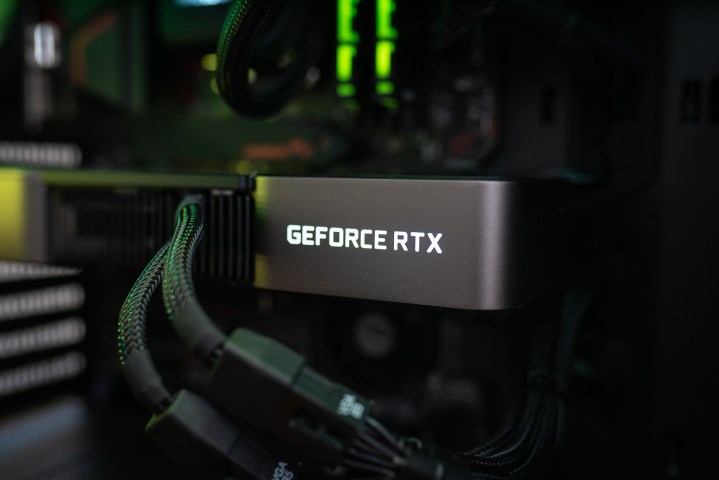It’s a foregone conclusion that Nvidia’s next-gen RTX 40-series will be the most exciting upgrade we’ve seen thus far for its GPUs.
Rumors have already pointed toward the massive performance boost the upcoming boards will deliver, but a new report suggests that the GPU lineup will be even better than previously believed.

As reported by TechRadar, credible technology insider Kopite7kimi — who has been at the forefront of next-gen GPU rumors — recently stated that it should be “easy to reach 2.8GHz, at least not very hard” for Team Green’s AD102 GPU die, which is said to be the chip powering the RTX 4090.
Comparatively, the GeForce RTX 3090 sports a 1.79GHz base clock speed. In any case, it seems the aforementioned 2.8GHz figure and the assumption that it’s not difficult to hit that clock speed is actually an understatement, according to a new message from Kopite.
He has now provided a follow-up to his original tweet by stating that: “I must say we can expect a much higher frequency.”
Naturally, the presumption will now fuel rumors of a base clock speed of at least 3GHz for the RTX 4090. Hardware Times also highlights how custom liquid-cooled models will obviously push that number further.
Even with such unprecedented clock speeds for standard models, the website still believes the peak power draw will remain in the 400 to 450 watts range.
Elsewhere, Hardware Times points out how clock speeds of 3GHz could therefore theoretically see the RTX 4090 variant surpass the 100 TFLOPs limit. We’ve already heard rumors earlier this year regarding this GPU approaching that unheard-of TFLOP mark.
Still, “significant heat generation and an unreasonable power draw” are the drawbacks with such a high TFLOPs count, according to the website. It also reiterates how the RTX 4080 should hit the 50 TFLOPs mark, while the RTX 4070 should exceed 30 TFLOPs.
Either way, Nvidia is reportedly working on a GPU that will require a massive 900 watts of power, so you can only imagine what kind of TFLOP performance that particular video card will offer.
So how does a base boost clock of 3GHz compare with AMD’s own next-gen Radeon 7000-series? We’ll still have to wait and see until both companies officially introduce their new graphics cards. That said, rumors circulating around Team Red’s offerings suggest they may ultimately beat Nvidia in both efficiency and performance. Only time will tell who comes out on top.




